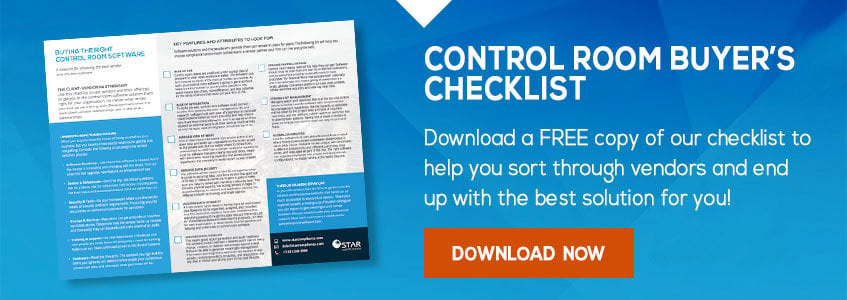Compliance Control Room: An Origin Story
A behind-the-scenes look at how Star’s control room compliance solution came to be and the unexpected emotional response it generates
“At StarCompliance, inspiration for new products can come from a variety of sources,” says StarCompliance Executive Director Of Product Ryan Sheridan. “Sometimes it’s a regulatory change. Sometimes it’s a request from one of our clients. Sometimes it’s market driven. Usually, it’s not just one thing but a combination of things. Such was the case with Compliance Control Room. We at first tentatively identified a market need, and then set about validating that need by way of other sources.”
Control room software solutions are more and more on the radar of financial institutions. A control room acts as a firm’s nerve center: the nexus through which all deal related activity must pass to be organized, recorded, and analyzed. At a big firm, there can be hundreds or even thousands of deals simultaneously in motion, each with hundreds or potentially thousands of people involved. And the accompanying deluge of data that must be monitored relating to who’s involved in what can be overwhelming, with little room for error and a premium placed on clearing deals quickly.
But for this volume of work, and the immense amount of responsibility and pressure that comes with it, control room teams are small: typically half a dozen people or less, who must monitor anything and everything related to every deal the firm has in motion. Until the advent of automated compliance software, teams had to monitor this data deluge either completely manually or semi-manually, at best relying on rudimentary combinations of spreadsheets and email chains to ensure conflicts were kept in check.
“We kept hearing the same thing, whoever we talked to,” says Sheridan. “‘We’re using a collection of different solutions for control room.’ So a centralized control room platform seemed like a universal need: a common requirement and critical function. And that was when the idea began to gather momentum for us. There was definitely something in the air.”
An initial realization was that even though Star didn’t yet have a control room product, it’s employee conflicts monitoring software had commonality with what would become Compliance Control Room. That is, the building blocks for what is essentially a commercial conflicts monitoring product already existed in the employee conflicts monitoring product.
Again, Sheridan: “To some degree, Control Room is the mirror image of our employee conflicts monitoring function, which monitors employee trading, gifts and entertainment spending, political donations, outside business activities, and private investments. There are commercial elements to each of these modules.”
For companies that need to spin up a control room function quickly, this ability to turn general conflicts monitoring expertise into control room expertise is good news. Star’s Compliance Control Room is one of the best, vendor-provided control room software solutions available. In the world of legal and accounting firms, specifically those that handle mergers and acquisitions, there are conflicts of interest requirements similar to those in the financial world. But the handful of products that offer a control room function for them aren’t designed for financial services. “With Compliance Control Room,” says Sheridan, “it’s no longer just a choice between spreadsheets-and-email and a bespoke software system, built by a general software development firm that needs to be brought up to speed in the specialized world of financial compliance, with the added burden of having to manage the system yourself in house.”
For any creative endeavor, ideas continually evolve. And for what would eventually become Compliance Control Room, there was a definite evolution in thinking as to what kinds of financial firms could use it. Again, Sheridan: “When we started, we presumed the final product would apply exclusively to investment banks: the world of mergers and acquisitions, equity offerings, debt offerings, etc. Over the course of the build-out, what we learned was there’s a good use case for all sorts of other firms. Anyone who’s managing material non-public information (MNPI), for example, has a good use case for Compliance Control Room, as do companies that are providing loans or funding or have major holdings. This wider applicability of the product was an important realization that came a little later for us.”
But perhaps the most surprising realization is the emotional response Compliance Control Room evokes from potential clients. There’s a lot of pressure on control room teams, and a lot of high-level focus put on their performance. A system like Control Room provides transparency and visibility into what control room professionals do every day, and can back them up in terms of their decision making. “When we pitch our employee conflicts monitoring suite,” says Sheridan, “the compliance teams get it. They know it’s going to help. They know how much easier it will make their lives. And they’re very happy about that. But when we pitch Control Room, the response is much more emotional. ‘Oh my God! We can’t wait! This is going to save us!’ There’s a real emotional tie to this product.”




